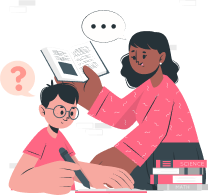Watching your child’s eyes light up at the end of a story is a moment every parent treasures.
They want to talk about the characters, ask questions, and imagine what happens next. This curiosity is the perfect opportunity to deepen their learning.
Activities to do after reading a book for kindergarten turn that excitement into hands-on experiences that strengthen comprehension, memory, and critical thinking. Your child gets to connect with the story in ways that are fun and meaningful.
That’s why in this blog, we have compiled a list of 20+ post-reading book activities for kindergarten, including options for both school and home, to help your child make the most of every story.
Key Takeaways
-
Post-reading activities turn story time into hands-on learning that strengthens comprehension, memory, and critical thinking.
-
Matching activities to your child’s interests, energy, and skills keeps them engaged and motivated.
-
Both classroom and home settings offer unique opportunities for children to explore stories creatively and collaboratively.
-
Consistent, interactive engagement with books helps kindergarteners develop confidence, vocabulary, and a love for reading.
Why After-Reading Activities Are Beneficial for Kindergarteners?
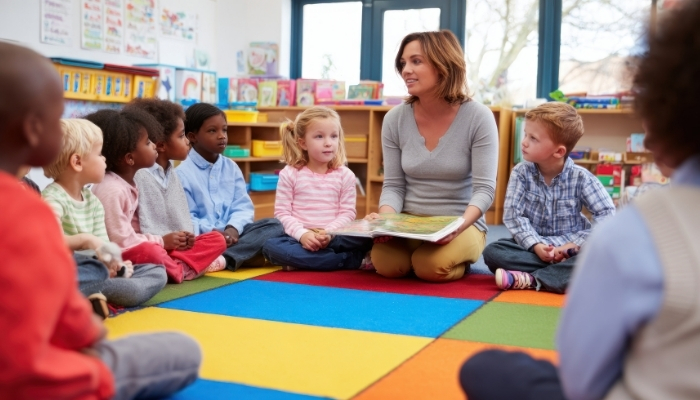
After-reading activities help your kindergartener process what they just heard or read. Young minds need time to think about new information before it sticks. These activities give your child space to explore story ideas in their own way.
Children whose parents read them five books daily enter kindergarten having heard 1.4 million more words than kids who were never read to. Activities after reading help your child use and understand these words better.
Here's why activities to do after reading a book for kindergarten matter so much:
-
Build comprehension skills - Your child learns to understand story events and character actions.
-
Develop vocabulary - New words become familiar through creative activities.
-
Create emotional connections - Children relate to characters and situations in stories.
-
Strengthen memory - Fun activities help children remember story details longer.
-
Boost creativity - Open-ended activities let children's imagination grow.
-
Improve communication - Children practice discussing books and sharing their ideas.
These benefits work together to create confident young readers. Your child builds skills that help them in school and beyond. The key is making these activities feel like play, not work.
Post-reading activities also help you understand what your child learned from the story. You can see which parts confused them and which parts they loved most.
Also Read: Kindergarten Reading Level Guide and Tips
20 + Activities to Do After Reading a Book for Kindergarteners
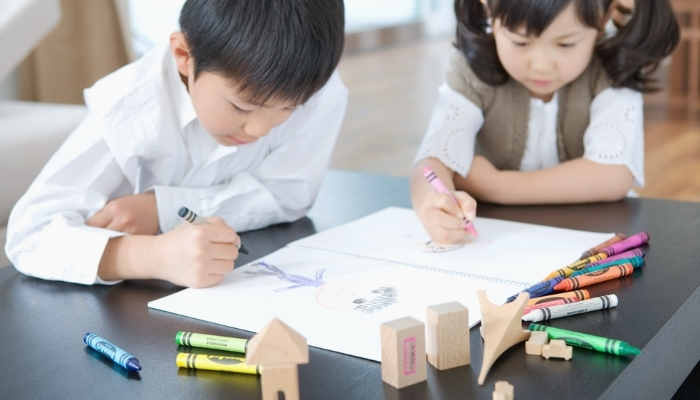
The right activities can happen anywhere your child reads books. Teachers and parents both play essential roles in helping children explore stories after reading them.
Different settings offer different opportunities for post-reading fun. Schools provide group activities and classroom resources. At home, parents can create cozy reading routines, explore books tailored to their child’s interests, and turn everyday moments into learning opportunities.
Let's examine specific activities to do after reading a book in kindergarten in each setting.
Post-Reading Activities for the Classroom
Teachers can guide whole classes or small groups through these engaging post-reading activities. The classroom setting enables children to learn from one another while exploring story themes together.
Here are proven activities that work well in kindergarten classrooms:
1. Draw a Picture of a Favorite Character or Scene
Set up an art station with crayons, markers, and colored pencils for this creative post-reading book activity.
-
Have students choose their favorite story moment to illustrate.
-
Focus on encouraging creativity rather than perfect artwork.
-
Encourage children to share their drawings with their peers.
-
Display finished artwork around the classroom for inspiration.
Benefits: This activity helps children visualize story events and characters more clearly. Drawing also improves fine motor skills needed for writing.
2. Act Out a Part of the Story with Classmates
Assign simple character roles for students to perform together.
-
Select an exciting scene that offers multiple character parts.
-
Provide basic props or costumes from your dress-up collection.
-
Allow students to improvise dialogue in their own words.
-
Guide the performance without over-directing creative choices.
Benefits: Acting builds confidence and helps children understand and express their emotions and character traits. It also improves memory and public speaking skills.
3. Summarize the Main Events Aloud
Guide your class through retelling a story in their own words aloud.
-
Prompt students to identify beginning, middle, and end events.
-
Support them in recognizing the most important story moments.
-
Model simple, clear language for story descriptions.
-
Rotate speaking opportunities among different students.
Benefits: Summarizing teaches children to identify the key elements of a story. This skill helps with reading comprehension in all subjects.
4. Play "Thumbs Up/Thumbs Down" for Story Facts
Transform story comprehension into an engaging whole-class game.
-
Prepare statements about the book, mixing true and false facts.
-
Watch for thumbs-up responses to correct information.
-
Include thumbs-down signals for incorrect statements.
-
Add silly or impossible details to increase engagement and laughter.
Benefits: This game helps children focus on the details of the story. It also teaches them to think critically about information.
5. Create Simple Puppets for a Story Show
Organize a puppet-making station with basic craft supplies.
-
Gather paper bags, socks, or craft sticks as puppet foundations.
-
Support students as they design characters from the story.
-
Schedule time for informal puppet show presentations.
-
Celebrate creative interpretations and original character dialogue.
Benefits: Puppet making develops creativity and fine motor skills. Puppet shows help children practice storytelling and gain confidence.
6. Retell the Story Using Props or Toys
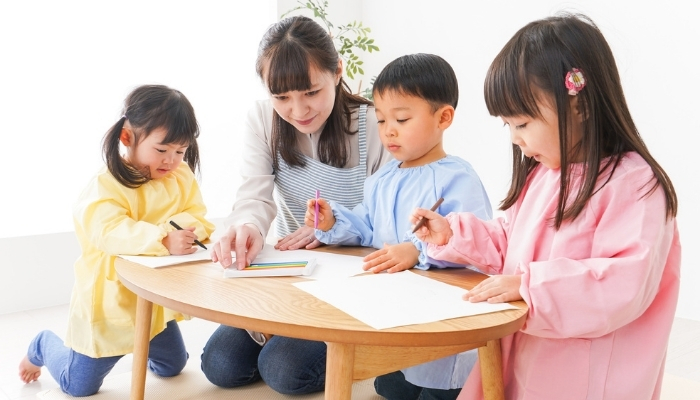
Collect classroom manipulatives that connect to story elements.
-
Match available toys to story characters, settings, or objects.
-
Observe as students recreate scenes using these props.
-
Support sequential storytelling from beginning to end.
-
Pose questions that extend thinking about story events.
Benefits: Props help children remember story events in order. This activity also connects stories to real-world objects that children are familiar with.
7. Play "Discover the Missing Letter" Word Game
Write key vocabulary words on the board with strategic letter gaps.
-
Select important character names or story objects for the activity.
-
Challenge students to identify which letters are needed to complete each word.
-
Support pronunciation of finished words through group repetition.
-
Connect completed words back to specific story moments.
Benefits: This game builds letter recognition and spelling skills. It also reinforces vocabulary from the story.
8. Use Building Blocks to Create Story Settings
Arrange construction materials for hands-on story exploration.
-
Invite students to recreate locations mentioned in the book.
-
Support small group collaboration during building time.
-
Facilitate discussions about architectural choices and story connections.
-
Link completed structures back to specific story scenes.
Benefits: Building activities develop spatial skills and teamwork. Children also practice describing places and events.
9. Draw Story Scenes on a Whiteboard
Rotate opportunities for students to illustrate at the front of the room.
-
Provide each child with whiteboard time to share their artistic vision.
-
Challenge the class to identify which story moment is being shown.
-
Facilitate discussions about different artistic interpretations of the same scene.
-
Celebrate diverse perspectives on story visualization.
Benefits: Public drawing helps build confidence and develop artistic skills. Children also learn that everyone sees stories differently.
10. Participate in "Ball Toss" Reading Questions
Incorporate movement into comprehension practice with this active game.
-
Gently toss a soft ball to various students throughout the classroom.
-
Pose age-appropriate questions to whoever catches the ball.
-
Maintain positive, encouraging questions that build success.
-
Allow ball-catchers to choose the next participant.
Benefits: This activity keeps children engaged and moving. It also helps them practice answering questions about books.
11. Complete a Collaborative Story Mural
Mount large paper on a classroom wall for this ongoing art project.
-
Invite each student to contribute one element to the group artwork.
-
Plan the mural to showcase various characters or scenes from the story.
-
Schedule mural work across multiple days to avoid rushing.
-
Feature the finished collaborative piece prominently in your classroom.
Benefits: Group murals teach cooperation and planning skills. Children also feel proud seeing their work displayed.
12. Make a Word Wall from Story Vocabulary
Design an attractive display featuring essential vocabulary from books.
-
Select the most engaging or challenging words from the story.
-
Mount words on colorful paper for visual appeal.
-
Position the display where all students have clear visibility.
-
Reference word wall vocabulary during other learning activities.
Benefits: Word walls help children remember new vocabulary. Seeing words displayed helps with reading and spelling practice.
School activities work best when teachers make them feel like games rather than assignments. Children learn more when they're having fun and feeling successful.
Also Read: Engaging Reading Fluency Games for Students
Post-Reading Activities for Home
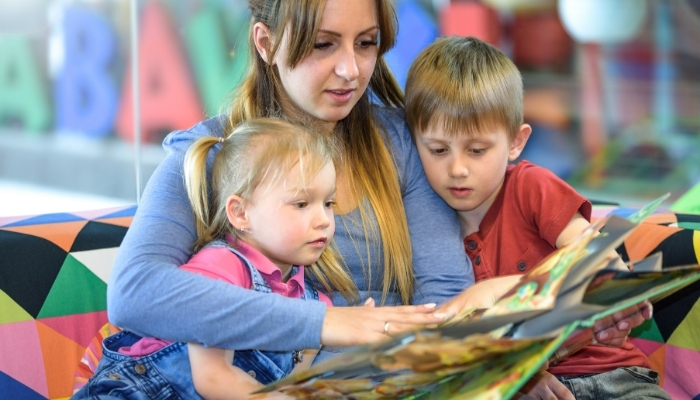
Home activities let you give your child personal attention while exploring books together. These activities can be done after reading a book for kindergarten in any home setting.
Here are engaging activities you can try with your kindergartener:
13. Write or Dictate a Letter to the Author or Characters
Transform your child's excitement about the story into written communication.
-
Listen as your child shares what they want to tell the book's author.
-
Transcribe their words or support their independent writing attempts.
-
Include personal questions about the characters or the story's inspiration.
-
Create a special tradition by mailing letters or saving them in a memory book.
Benefits: Letter writing builds communication skills and personal connections to books. Children also practice expressing their thoughts in writing.
14. Act Out the Story with Family Members
Change your living space into an interactive theater experience.
-
Distribute character roles among willing family participants.
-
Raid closets for simple costume pieces and props.
-
Step back and let your kindergartener take the lead.
-
Capture these special moments with photos or video recordings.
Benefits: Family acting builds confidence and helps children understand character motivations. It also fosters positive memories associated with reading.
15. Make a Story-Inspired Snack or Cooking Activity
Bridge literature and real-world experiences through kitchen adventures.
-
Identify foods mentioned in the story for recipe inspiration.
-
Invite your child to participate in measuring, mixing, and preparation.
-
Maintain story conversations throughout the cooking process.
-
Share your literary-inspired meal while continuing book discussions.
Benefits: Cooking develops math and science skills while connecting to literature. Children also remember stories better through multiple senses.
16. Retell the Story to a Family Member or Pet
Provide your child with an appreciative audience for story sharing.
-
Arrange opportunities for storytelling to grandparents, siblings, or beloved pets.
-
Support your child in using their own vocabulary and expressions.
-
Gently prompt memory recall for essential story elements when needed.
-
Encourage listeners to engage with the narrative through thoughtful questions.
Benefits: Retelling improves memory and communication skills. Children also gain confidence speaking to different audiences.
17. Draw a New Ending for the Story
Unlock your child's creative potential by reimagining story conclusions.
-
Explore alternative endings through open-ended questioning.
-
Set up an art station with a variety of drawing materials.
-
Listen actively as your child narrates their artistic vision.
-
Engage in a thoughtful comparison between the original and reimagined conclusions.
Benefits: Creating new endings develops creative thinking and problem-solving skills. Children also learn that stories can have multiple possibilities.
18. Build Something from the Story Using Building Toys
Repurpose existing toys to recreate literary elements in a three-dimensional format.
-
Brainstorm story structures and objects that could be constructed.
-
Gather Lego sets, wooden blocks, or other building materials from toy collections.
-
Collaborate on construction while maintaining story-focused conversations.
-
Showcase completed projects in your child's personal space for continued inspiration.
Benefits: Building activities develop spatial reasoning and fine motor skills. Children also practice following directions and planning projects.
19. Sculpt a Story Character Using Modeling Clay
Bring beloved characters to life through tactile art creation.
-
Provide clay, Play-Doh, or similar moldable materials for artistic expression.
-
Discuss the character's physical attributes and personality traits during the sculpting process.
-
Allow creative freedom without imposing adult expectations for technical perfection.
-
Create a gallery display of finished sculptures or preserve them through photography.
Benefits: Sculpting improves fine motor skills and artistic expression. Children also think more deeply about character traits and appearance.
20. Have a Family Quiz About Story Events
Transform comprehension assessment into an entertaining family competition.
-
Develop age-appropriate questions about plot, characters, and settings beforehand.
-
Alternate between family members as questioners and respondents.
-
Maintain encouraging, supportive questioning that builds confidence.
-
Welcome child-generated questions to extend engagement and ownership.
Benefits: Quizzes help children practice recalling story details. Family participation makes learning a social and enjoyable experience.
Also Read: Top 15 Books for Shared Reading in Kindergarten
21. Create Handmade Crafts Based on Characters
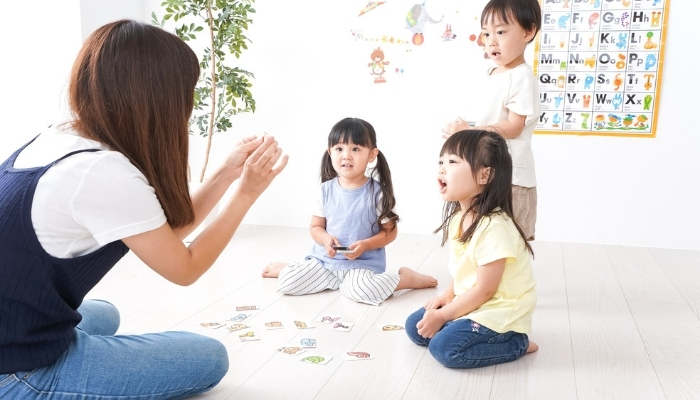
Channel story inspiration into hands-on artistic projects.
-
Select craft ideas that reflect story characters, themes, or settings.
-
Organize basic supplies, including paper, adhesives, scissors, and decorative materials.
-
Allow multi-session projects that accommodate attention spans and schedules.
-
Celebrate finished crafts through a prominent home display.
Benefits: Crafting develops creativity and patience. Children also feel pride in making something with their own hands.
22. Write or Draw a Book Review Using Stars and Pictures
Guide your child through their first experiences with literary criticism.
-
Explore your child's emotional response through star rating systems.
-
Support visual storytelling through drawings of favorite story moments.
-
Record your child's verbal reflections in simple, accessible language.
-
Compile reviews in a dedicated journal or portfolio for future reference.
Benefits: Reviewing books helps children develop critical thinking skills by analyzing what they read. It also builds early writing skills and personal opinions.
23. Play Board Games or Puzzles with Story Themes
Extend literary engagement through complementary gaming experiences.
-
Select games that echo story themes, characters, or settings.
-
Maintain book connections through ongoing conversation during play.
-
Invite your child to explore the connections between games and literature.
-
Transform game sessions into opportunities for deeper story exploration.
Benefits: Games develop strategic thinking and problem-solving skills. Children also practice making connections between different activities.
24. Draw a "Map" of the Story's Setting
Support geographic thinking through artistic story visualization.
-
Explore story locations through detailed discussion and questioning.
-
Encourage artistic mapping that includes relevant landmarks and features.
-
Incorporate story-specific details, such as character homes, essential trees, or significant buildings.
-
Reference completed maps during story retellings to reinforce sequence and location.
Benefits: Map-making develops spatial skills and attention to detail. Children also better understand story structure and sequence.
Home activities work best when you follow your child's interests and energy levels. Some days, they might want active games, while other days, quiet crafts.
The most important thing is spending time together exploring books in ways that feel fun and natural for your family.
How to Choose the Right Activity for Your Child?
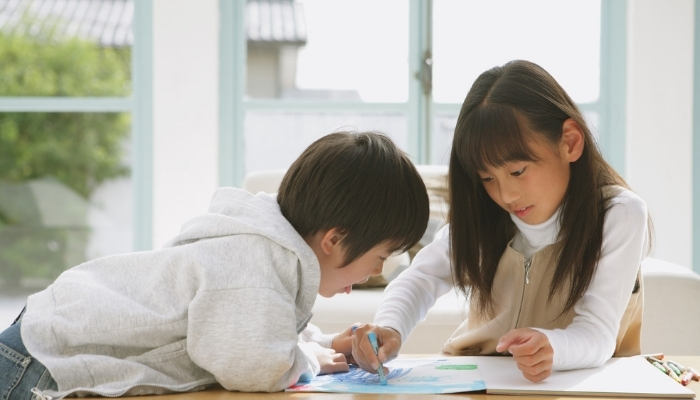
Choosing a post-reading activity can feel overwhelming with so many options. The right one depends on your child’s interests, personality, and learning style. Some children enjoy moving and acting, while others prefer quiet tasks like drawing or building.
Understanding what your child likes helps you pick activities that keep them engaged. When children enjoy an activity, they learn more and remember the story better. Focus on what works for them, rather than trying to follow every suggestion.
Here are key factors to consider when selecting the best activities:
-
Match Your Child's Energy Level: High-energy children need active options, such as acting out stories or building with blocks. Quieter children may prefer activities such as drawing, writing letters, or making crafts. Pay attention to when your child has more or less energy during the day.
-
Consider Available Time and Materials: Some activities require only five minutes, while others necessitate an hour or more. Choose based on your schedule and what supplies you have at home. Simple activities, such as story retelling, require no special materials. Crafts and cooking require more time and effort, as well as preparation.
-
Consider Your Child's Current Skills: Select activities that challenge your child without causing frustration. If they're just learning to hold crayons, opt for simple drawings over detailed crafts. If they love talking, focus on retelling and discussion activities.
-
Follow Your Child's Interests: Children who love animals will enjoy stories about pets or farm animals. Kids interested in building will connect with construction-themed books. Match post-reading activities to topics your child already cares about.
-
Mix Different Types of Learning: Some children learn best through movement, others through art or music. Try various activity types to determine what works best. Rotate between active games, creative projects, and quiet thinking activities.
-
Start Small and Build Up: Begin with simple activities that take just a few minutes. As your child gets comfortable with post-reading activities, you can try more complex projects that span several days.
-
Watch for Signs of Engagement: The right activity will keep your child interested and asking questions. If they seem bored or frustrated, try a different approach. Children should feel successful and excited about exploring books.
Remember that what works for one child might not work for another, even in the same family. Give your child choices when possible and pay attention to their reactions.
The goal is to build positive associations with reading and books. When children enjoy post-reading activities, they begin to look forward to story time and ask for more books.
Also Read: Effective Reading Comprehension Strategies for Kindergarten Students
Tips for Handling Post-Reading Activity Challenges

Even the best-planned activities can run into problems. Don't worry if things don't go perfectly the first time. Most challenges have simple solutions that make future activities run more smoothly.
Being aware of these common issues beforehand helps you prepare more effectively. Let’s examine some of the problems to watch out for and explore solutions to address them.
Challenge 1: My Child Loses Interest Quickly
Short attention spans are entirely normal for kindergarteners. Most five- and six-year-olds can focus on one activity for about 10-15 minutes.
Tips for Handling:
-
Break longer activities into smaller parts.
-
Let your child choose between two or three activity options.
-
Change activities when you notice attention fading.
-
Use timers to make activities feel like games.
-
Praise your child for the time they did participate.
Challenge 2: My Child Gets Frustrated with Difficult Tasks
Kindergarteners are still developing many physical and thinking skills needed for some activities.
Tips for Handling:
-
Choose age-appropriate activities that match your child's abilities.
-
Break complex tasks into smaller, manageable steps.
-
Offer help without taking over the entire activity.
-
Focus on effort and trying rather than perfect results.
-
Have backup, simpler activities ready for tough days.
Challenge 3: We Don't Have the Right Materials
Not every family has access to extensive craft supplies or special materials for activities.
Tips for Handling:
-
Use household items creatively for most activities.
-
Visit your local library for free craft programs and supplies.
-
Ask friends or family to share materials you don't have.
-
Focus on activities that need minimal supplies, like storytelling.
-
Remember that simple activities can be just as engaging.
Challenge 4: My Child Wants to Do the Same Activity Every Time
Some children find comfort in repetition and resist trying new things.
Tips for Handling:
-
Let your child repeat favorite activities sometimes.
-
Introduce small changes to familiar activities gradually.
-
Offer choices between familiar and new activities.
-
Model excitement about trying new things yourself.
-
Connect new activities to things your child already enjoys.
Challenge 5: My Child Compares Their Work to Others
Children often feel disappointed when their drawings or crafts don't look like examples or other children's work.
Tips for Handling:
-
Emphasize that everyone's artwork looks different, and that's good.
-
Focus on your child's creative choices rather than technical skills.
-
Display your child's work proudly, regardless of skill level.
-
Avoid comparing your child's work to siblings' or classmates.
-
Remind your child that practicing helps people improve over time.
Most challenges become easier to handle with experience. Start with simple activities and gradually try more complex ones as you learn what works best for your child.
Remember that the goal is enjoying books together, not creating perfect activities. Even "failed" activities can lead to great conversations and bonding time with your child.
How FunFox Boosts Activity-Based Reading for Kindergarteners?

At FunFox, trained educators guide kindergartners through post-reading activities that bring stories to life. Our Readers Club creates a space where children explore books through hands-on, age-appropriate activities while building reading skills and confidence.
Small Group Learning
-
Classes have 3–6 students to ensure each child gets attention and chances to participate.
-
Activities are adapted to match each child’s learning style.
-
Children learn from peers while building confidence and social skills.
Expert Activity Framework
-
Activities strengthen comprehension, memory, and critical thinking.
-
Multiple exercises per session reinforce learning.
-
Challenges grow as children’s skills develop.
Interactive Digital Resources
-
Online games and worksheets let children continue learning between sessions.
-
Parents receive materials to support reading at home.
-
Recorded sessions allow families to revisit favorite activities anytime.
Assessment and Feedback
-
Teachers provide guidance and track progress throughout activities.
-
Individual challenges are addressed with tailored exercises.
-
Children’s successes are recognized to boost motivation.
Community and Connection
-
Children participate in group activities with peers worldwide.
-
Reading challenges and special events create shared experiences.
-
Social skills develop naturally as children engage with stories together.
FunFox handles planning and guidance so your child can focus on exploring books, having fun, and building strong reading skills.
Conclusion
Activities to do after reading a book for kindergarten turn story time into meaningful learning moments. They give children opportunities to explore, create, and connect with stories in ways that stick.
FunFox Readers Club takes this one step further by guiding children through interactive post-reading activities designed to strengthen literacy skills while keeping learning playful and engaging.
Give your child the tools to develop a lifelong love of reading. Join the Funfox Readers Club today and turn every story into an exciting learning adventure.
FAQ’s
1. What are the activities after reading?
Activities after reading involve discussing the story, acting out scenes, drawing characters, retelling events, building story elements, playing comprehension games, and creating crafts to reinforce understanding and enjoyment.
2. What to do immediately after reading?
After reading, ask your child questions about the story, encourage them to summarize the events, share their opinions, illustrate their favorite parts, or act out scenes to strengthen comprehension and engagement.
3. How can post-reading activities improve comprehension?
Post-reading activities help children recall details, make connections, and practice vocabulary, ensuring they understand the story while developing critical thinking, memory, and storytelling skills.
4. What types of post-reading activities work best at home and school?
Hands-on activities, such as drawing, acting, building, crafting, and retelling, work well in both settings, offering engagement, creativity, and skill-building opportunities for young learners.









